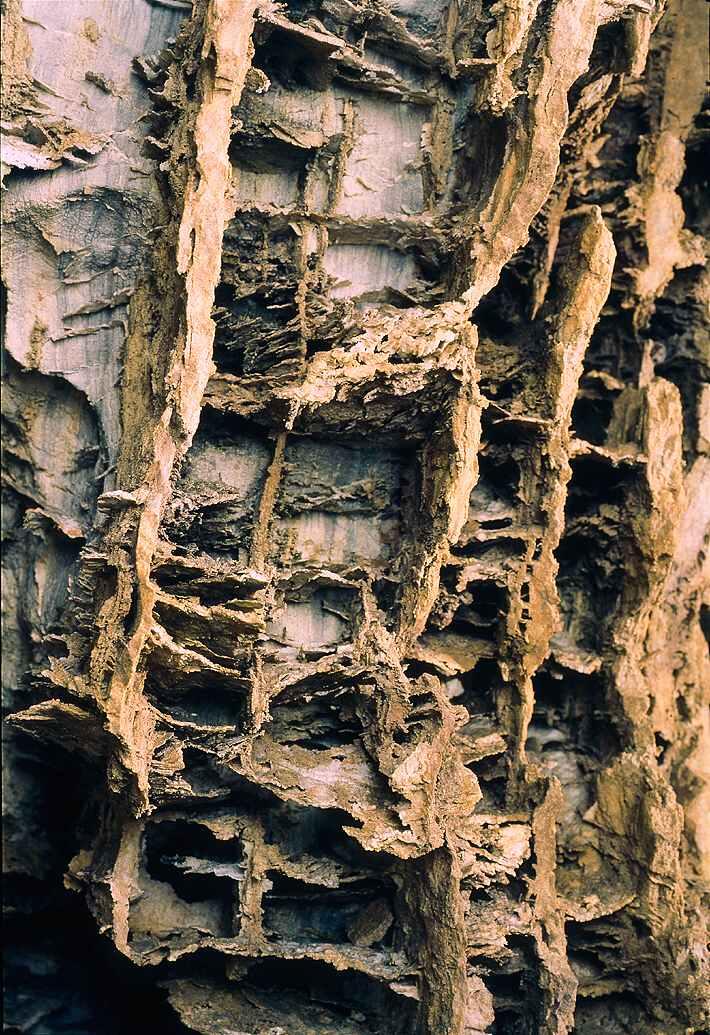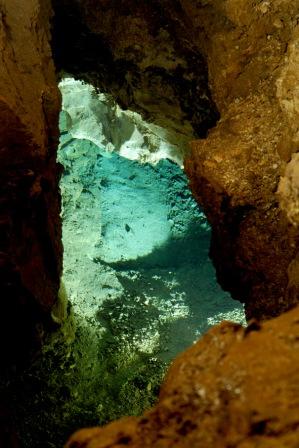Bozkov Dolomite Caves - characteristics

KARST OF THE KRKONOŠE MOUNTAINS AND THEIR FOOTHILLS
They have been formed for millions of years by water in relatively small bodies of crystalline limestones and dolomites situated in a mighty formation of phyllites and other metamorphosed rocks of the Krkonoše-Jizera crystalline unit. The series of moderate karst bodies emerge here on the Earth’s surface in two discontinuous bands in the west-east direction.
The caves were found here especially in the surroundings of Železný Brod, Bozkov, Jesenný, Poniklá, Vrchlabí, Svoboda nad Úpou and Horní Albeřice, more to the north than in the surroundings of Rokytnice nad Jizerou and Strážné. The Bozkov Dolomite Caves are the largest of them.
DOLOMITE (calcareous dolomite)
It is a carbonate rock composed of a mixture of minerals, calcite (CaCO3) and dolomite (CaMg(CO3)2). It was formed by the conversion of sedimented limestone rocks of ancient seas with the addition of magnesium (Mg). In addition to that, the dolomite body in Bozkov underwent strong silification during repeated orogenic processes.
BOZKOV DOLOMITE CAVES
-
They are situated on the northern edge of the village of Bozkov on the slope of the plateau called Na Vápenci (485 m a.s.l.);
-
They were formed due to a strong corrosive activity of the underground water in the lentil of calcareous metamorphosed dolomites, in some parts strongly silificated;
-
They consist of two relatively independent systems of cave corridors and halls, which were connected with trenches and a long tunnel at the times when the cave was made accessible;
-

They are permanently flooded with water in the lowest parts, forming underground lakes – the largest in Bohemia;
-
They are also unique with an unusual extent of selective corrosion of walls and ceilings, and with rare forms of these formations;
-
They are, with their total length of all the spaces known today – 1,060 m – and with denivelation of 43 m, the longest dolomite caves in the Czech Republic;
-
There is a 350 m long route open to the public with a tour duration of 45 minutes;
-
There is an air temperature of 7.5–9 °C (ca 47°F), relative humidity 96–100 % and temperature of water in lakes 8 °C;
-
They were declared a National Natural Monument in 1999;
-
They are annually visited by about 70 thousand visitors from all over the world.

DEVELOPMENT OF THE CAVES
Generally, four main phases of development of the caves can be distinguished: formation, widening, filling and destruction. However, the real process is much more complex; its individual phases blend together and in some cases are even repeated, which is also the case of the Bozkov Dolomite Caves.
In caves, which are our windows to the geological past, the information on the area development is recorded in the courses and shapes of corridors, in layers of their sedimentary fillings, solid products of weathering and in sinter, stalactite and stalagmite formations as well. Phases and courses of geological development are also documented by grooves and polishes on the walls, by cave-ins and fallen down blocks of rock.
During early development stages of the caves microscopic channels formed on the rock joints were widened by water slowly flowing for millions of years to form the current shape of the cave corridors. Indications of primary “proto-caves” were preserved in some parts thanks to the fact that they were filled with oxides of iron and manganese in the form of small branch-like structures – dendrites. In general, dolomites and dolomitic rocks are more resistant to dissolution than limestones, so that caves are not usually formed there. Nevertheless, the extreme aggressiveness of water from crystalline rocks in the surroundings of Bozkov caused formation of the largest cave system in the dolomites of the Czech Republic. Initial forms of the caves were formed deep below the surface and were fully filled with water. After carving of surrounding valleys and a decrease in the groundwater level, areas at higher altitudes remained dry and partly filled with insoluble remains of strongly silificated dolomite. Running atmospheric water gradually carried other solid products of weathering and clays to them, so that a part of the caves was fully filled. Stalactites, stalagmites and sinter coatings covering walls and the surface of older clay fillings are among the youngest formations. Modern methods of dating were successfully used for the determination of the beginning of formation of Bozkov stalactites and stalagmites about 250,000 years ago. Sinter coatings together with stalactites and stalagmites are being formed in the cave to the present day. The youngest are small needles of a rare mineral – aragonite, which occur in several places of inaccessible areas of the caves. During cold Quaternary periods, spaces near the surface were frozen through, which caused mighty breakdowns of ceilings, stalactite decoration dropped off and some spaces were even fully blocked by cave-ins. In other places, on the other hand, the stalactite and stalagmite decoration is being slowly re-dissolved by aggressive water.
SELECTIVE CORROSION
Special rugged shapes of corridors together with their detailed modelling formed by the process of selective corrosion are typical for the Bozkov Caves. Due to strong silification of dolomite, its dissolution could not take place uniformly. Insoluble veins of quartz and even whole layers of quartzite, as well as a dense network of fine quartz fibres that the rock is thick with, were exposed and formed due to water corrosion into the shapes of leaflets, laths, benches and reticular or honeycomb structures of various strengths, which, especially on the walls and ceilings of Nové jeskyně (New Caves), form unique formations. In some places, thicker siliceous layers form solid walls of spaces, limit the width of corridors and dictate their direction (e.g. in Blátivá chodba (Muddy Corridor), in Loupežnická jeskyně (Robber's Cave) and especially in Vánoční jeskyně (Christmas Caves), which are not open to the public).
PARTS OF THE BOZKOV CAVES THAT ARE INACCESSIBLE TO THE PUBLIC
Although the tour route in the Bozkov Caves leads through the most interesting places of the system, it is only one third of the total length of all spaces known today. In the large part of the cave, which cannot be seen by visitors, there are tight and complex cavities and passageways. For example Bludiště (Labyrinth) in Staré jeskyně (Old Caves) is formed by crannies among clusters of rock blocks and fallen ceilings, and is difficult to overcome even for an experienced speleologist. Nevertheless, the reward for their effort can be a view of a special type of pisolite decoration that cannot be found in other parts of the caves. The most extensive part of the system that is not accessible to the public is the cave complex of Vánoční jeskyně (Christmas Caves) and Novoroční jeskyně (New Year Caves), which was discovered in the 1960s and 1980s. Here, undisturbed by technical works, well-preserved unique modelling of the cave spaces including clay and debris fillings are found, which must have been cleared out from most of the route that is open to the public. Exquisite foliaceous and leaf-like structures of siliceous layers prepared by selective corrosion emerge here together with places covered with very fine crystals of aragonite. Other relatively extensive parts of the system are situated below the underground water level and thus they are completely flooded. These spaces were discovered by cavers in 1986 near Mládežnický dóm (Youth Dome) and Jezerní dóm (Lake Dome). During long-term pumping and gradual reduction of the water level they descended through the system of shafts and smaller chambers to a depth of 14 m below the normal water level. At present, however, these parts are flooded with water again.
Speleological surveying of the Bozkov Caves is still in progress and therefore every year several metres of new spaces are discovered.